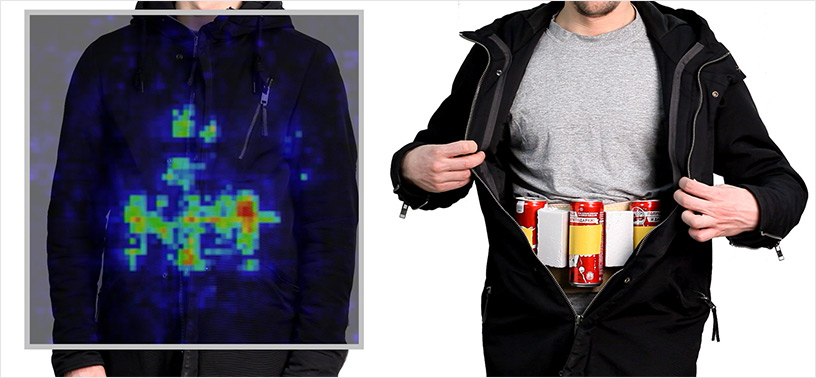To provide security and safety to people at common places like airports, office entrances, educational institutes, bus stands, and railways stations etc. it has become essential to screen people and their belongings for the possession of any unwanted objects in general and explosives, drugs and weapons in particular. With the growing influx of people at such places and expanding modes of operandi by the offenders gone are the days when security staff can check people and their belongings manually. Public transport and event security face many challenges, with suicide bombings, public-area shootings and knife attacks now more likely than ever. With the rising level of violence and terrorism all over the world there is need for significant screening and terahertz screening technology is proving a milestone in this direction. It is expected that sales of equipment used to screen people for explosives, weapons and contraband will grow at 6.6% between 2018 and 2023.
Traditional screening technology
Science and technology has provided various means of screening like X-rays, Microwaves, metals detectors etc. and terahertz screening is the lasts technology in the series of such screening technologies. Traditional event security has focused on manual searches of bags or the use of bag X-ray scanners and metal detectors. X-ray bag scanning and metal detection are time-consuming processes. Moreover, deployment of people-screening devices in non-traditional applications such as event venues and public transportation stations is likely to elicit controversy and may inadvertently create a feeling of panic. In the case of public transportation hubs, security is provided by CCTV and monitoring to spot threats. However, operators will not be able to spot all unusual behaviors, and they will not be able to assess whether a suspicious situation involves explosives. Open areas are even more difficult to protect, prompting work on equipment as part of a concept of stand-off detection, where scanning for explosives or contraband can be performed at a distance from the potential source. In case of a positive detection, the details of operational response by police or security services would have to be carefully elaborated to prevent panic and disruption. False positives and negatives can be particularly problematic in public transportation settings as people usually rush for trains to get to workplaces and appointments. Any further disruptions to their journeys would have a negative impact on the railroads’ business and customer satisfaction, with the disruption being blamed on the train companies.
Terahertz screening
Terahertz nondestructive evaluation pertains to devices, and techniques of analysis occurring in the terahertz (~1012Hz) domain of electromagnetic radiation. These devices and techniques evaluate the properties of a material, component or system without causing damage. Terahertz imaging is an emerging and significant nondestructive evaluation (NDE) technique used for dielectric (nonconducting, i.e., an insulator) materials analysis and quality control in the pharmaceutical, biomedical, security, materials characterization, and aerospace industries. Technology was developed by British company called Thruvision. Emerging technologies, including millimeter and terahertz waves, are being used for passenger screening at airports. These technologies now promise to increase security in other applications and better protect visitors at large event venues and in open areas. Terahertz technology, specifically, offers a solution to these challenges by allowing the scanning of a large number of people without requiring them to stop for a security check. This is particularly vital for high-throughput areas such as airports, train stations, bus stations or open areas. Even though the detection process is more challenging due to high speed of people’s movement, machine learning and analytics can help improve the accuracy of the detection process. This will help reduce false alarms, which can be a particular challenge in such complex environments. Even though the industry has successfully managed to commercialize terahertz technology, its practical application may require much more testing before wider deployment is possible.
Advantages of terahertz screening
- Terahertz screening can detect suspicious items from 30 feet away.
- It can screen more than 2,000 passengers per hour.
- The machines scan for metallic and non-metallic objects on a person's body.
- Terahertz imaging has proved to be effective in the inspection of layers in paints and coatings, detecting structural defects in ceramic and composite materials and imaging the physical structure of paintings and manuscripts.
- Terahertz waves are absolutely harmless to humans, and have no ionizing radiation unlike X-ray machines. These properties of terahertz and sub-terahertz spectral ranges make T-ray based screening solutions valuable for applications where human health and safety are of utmost importance.
- Terahertz devices are small enough to be located in inconspicuous, strategic spots around the area, which can help extend the security perimeter away from the most sensitive parts and avoid impeding the flow of people.
- Terahertz scanners can be installed at the entrances to buildings, secure areas, and other places with high throughput capacities enabling the operator to stealth-screen people without their knowledge. This can ensure effective detection of various person-borne threats with no disturbance to individuals.
